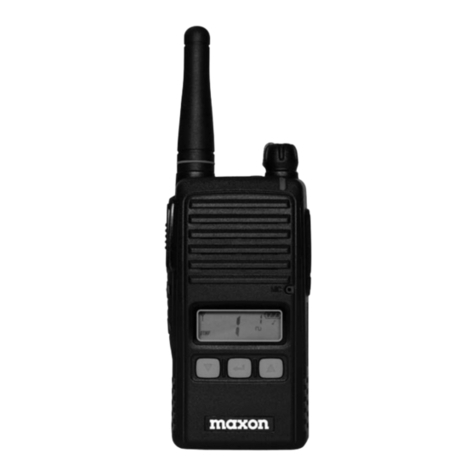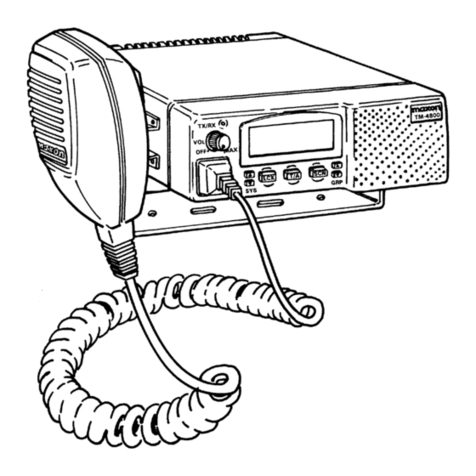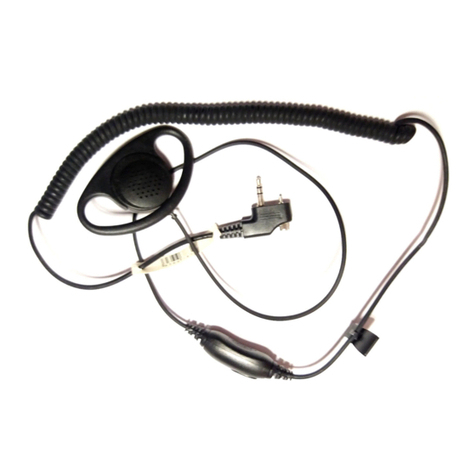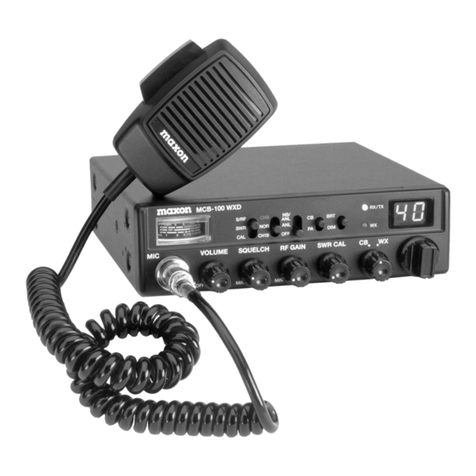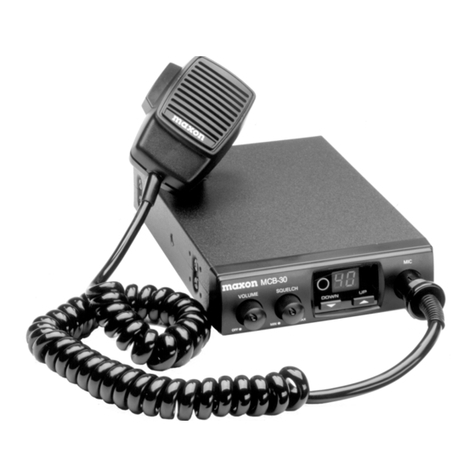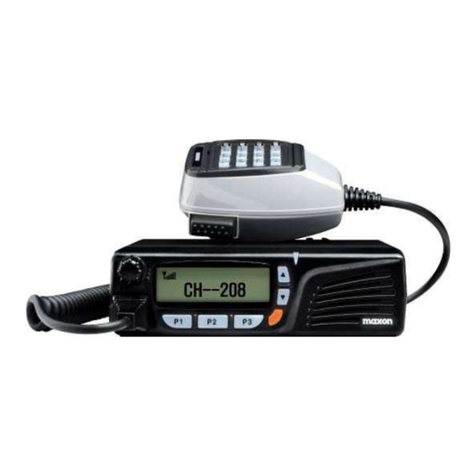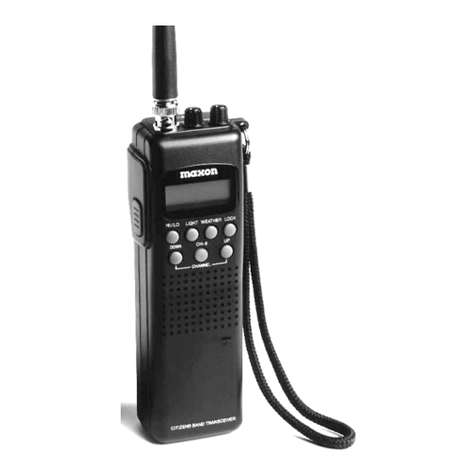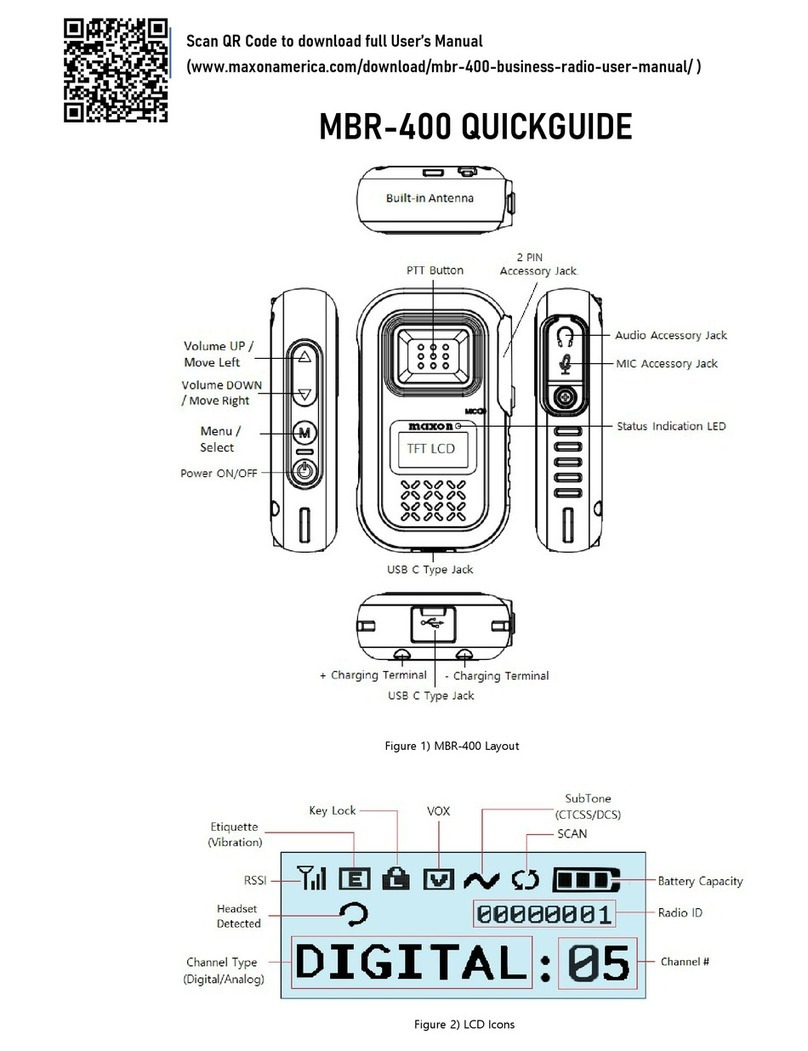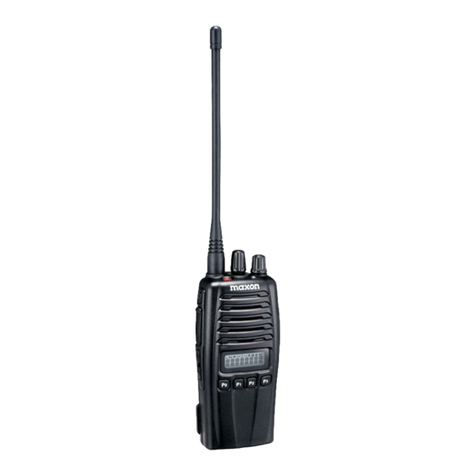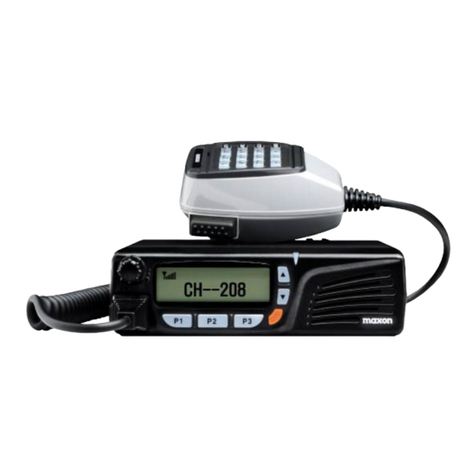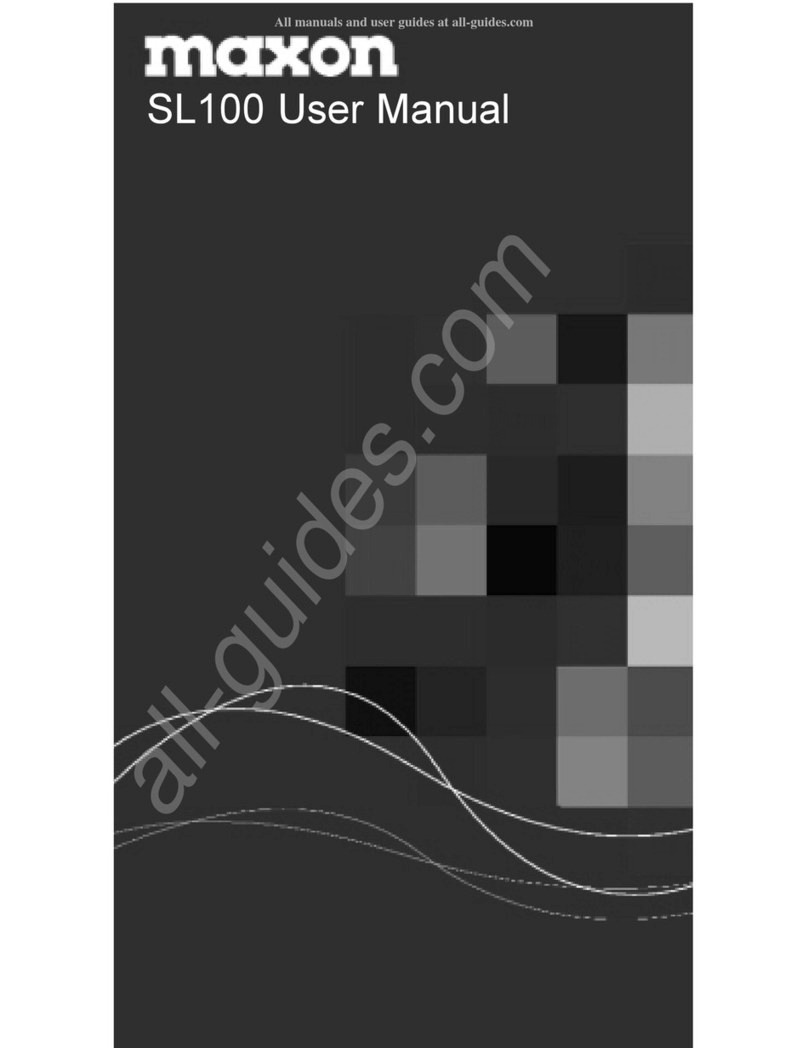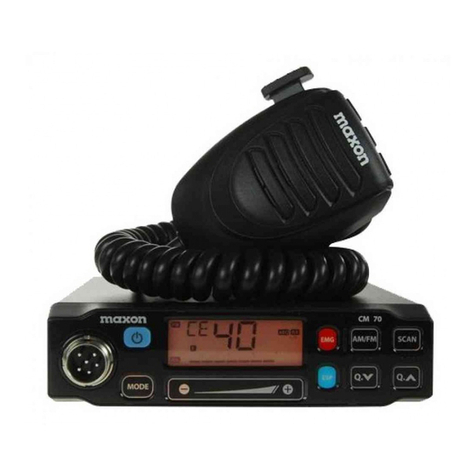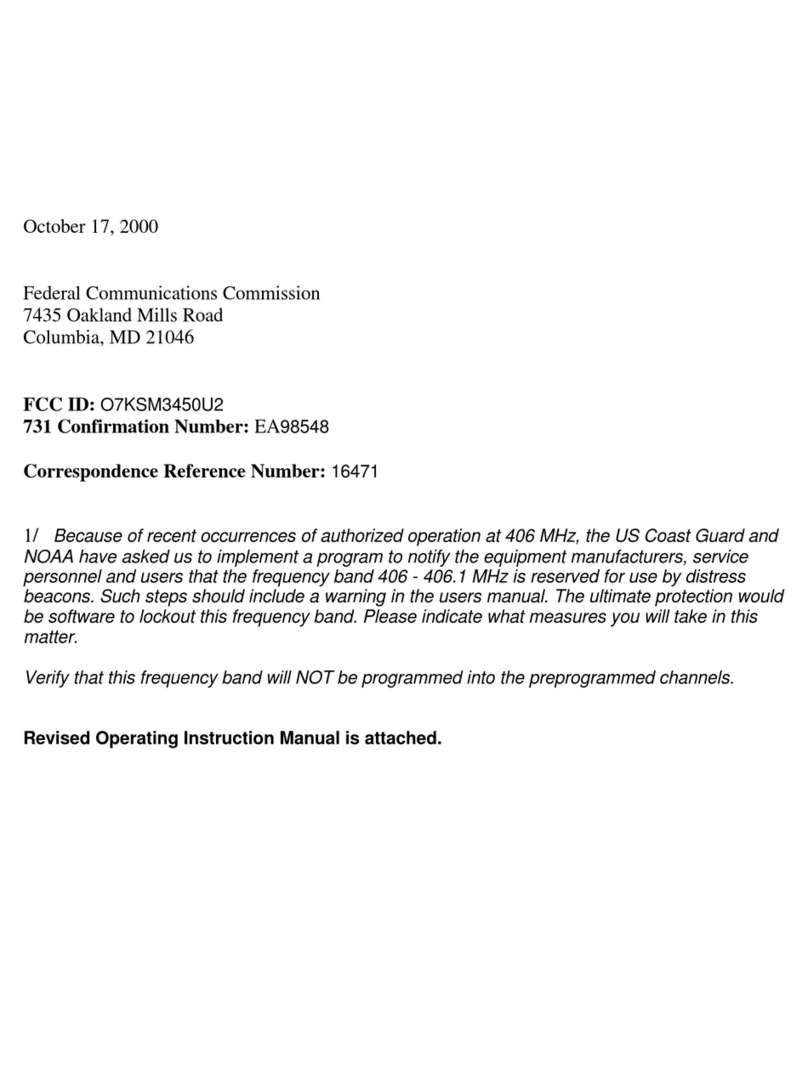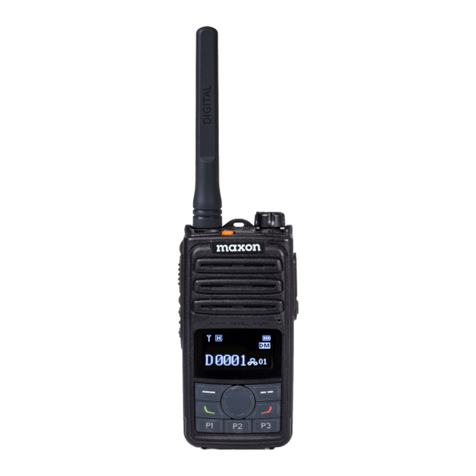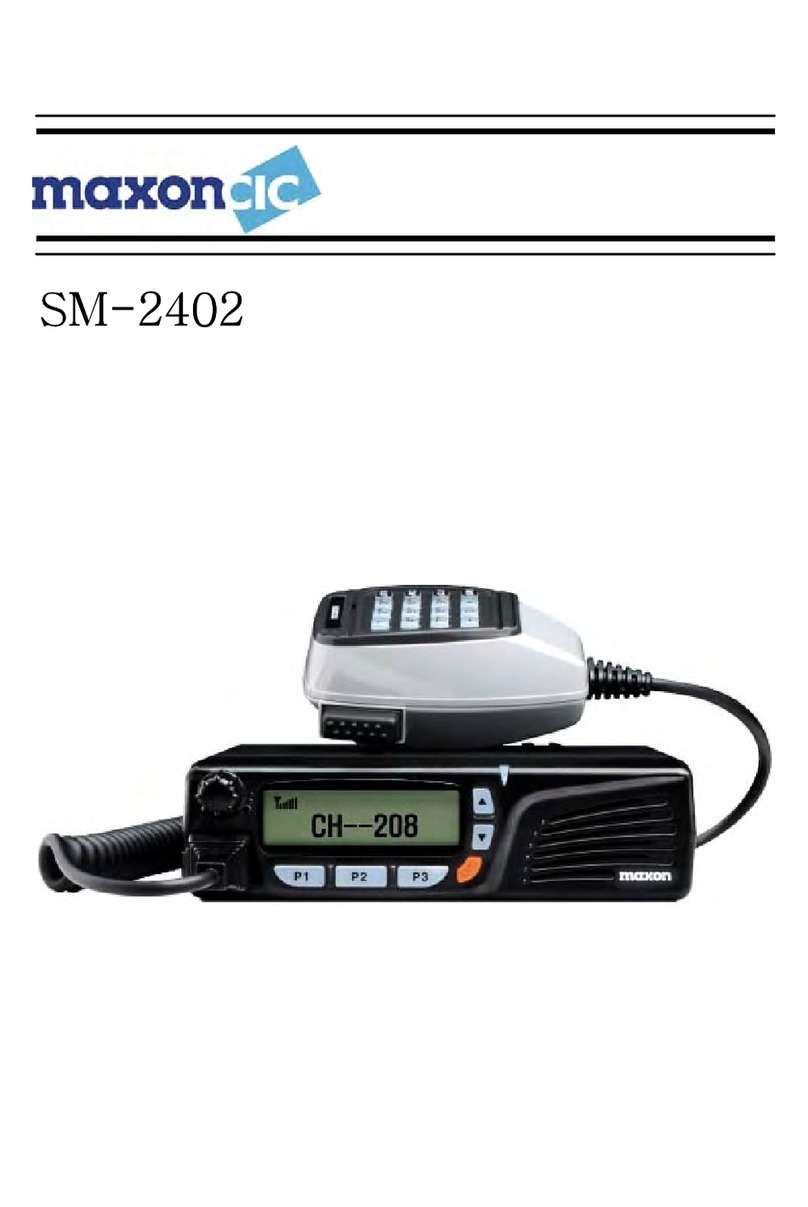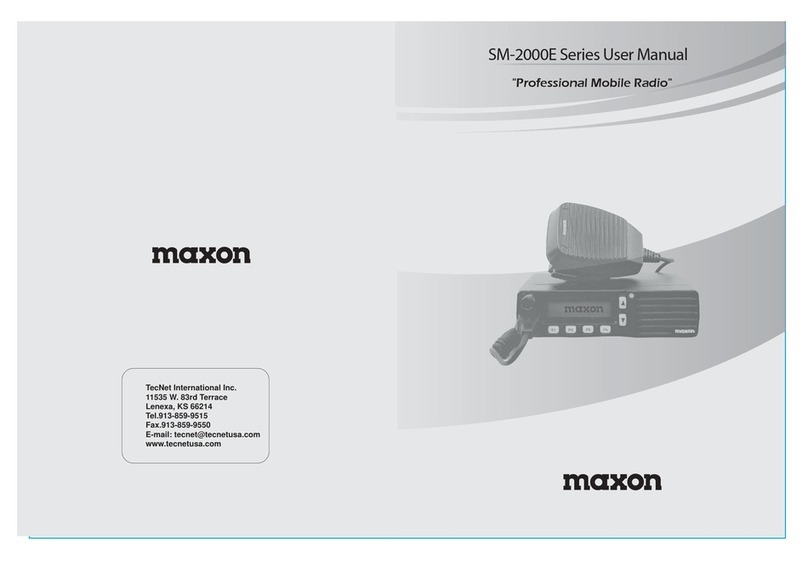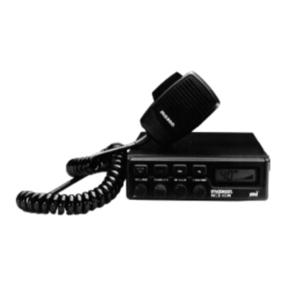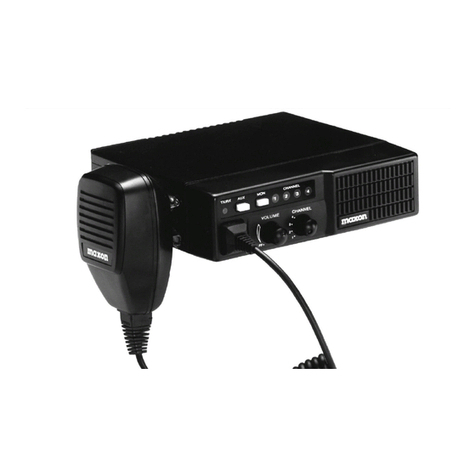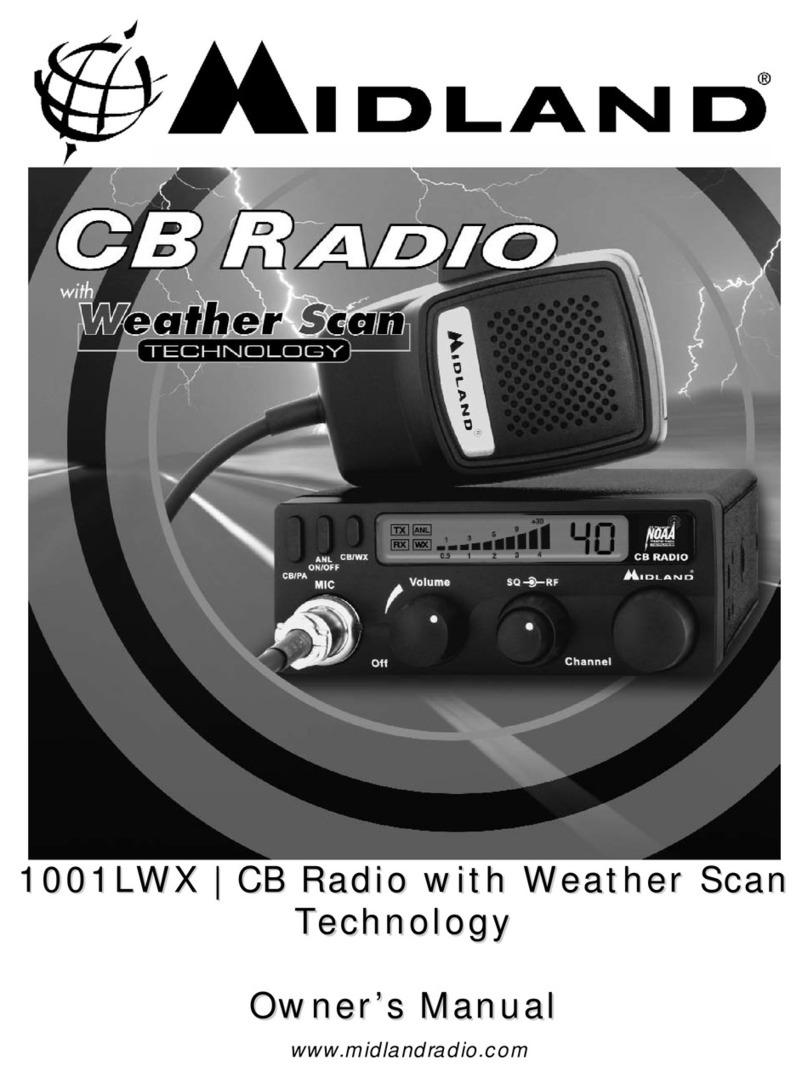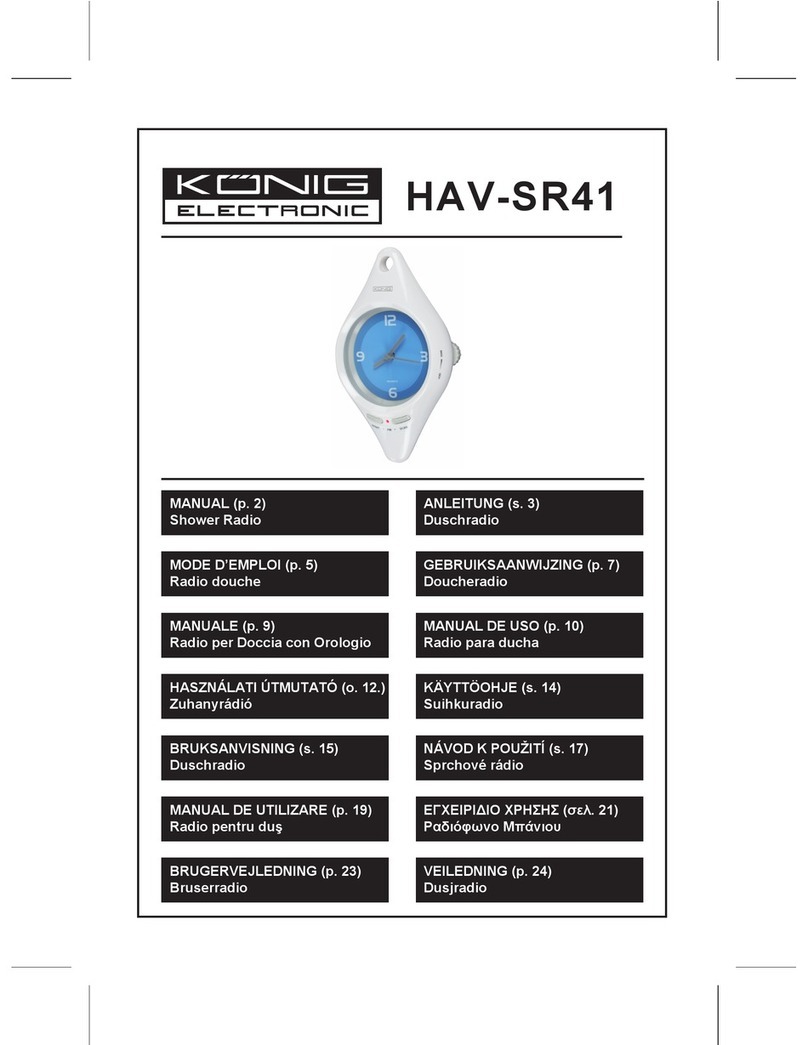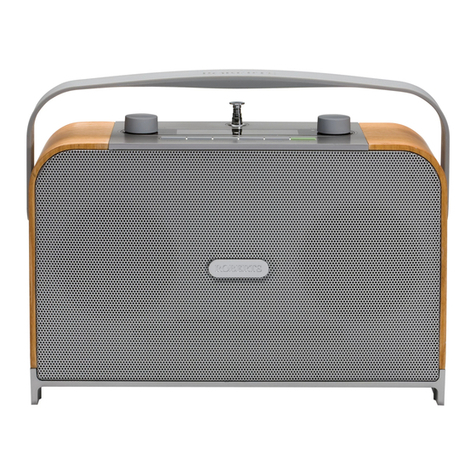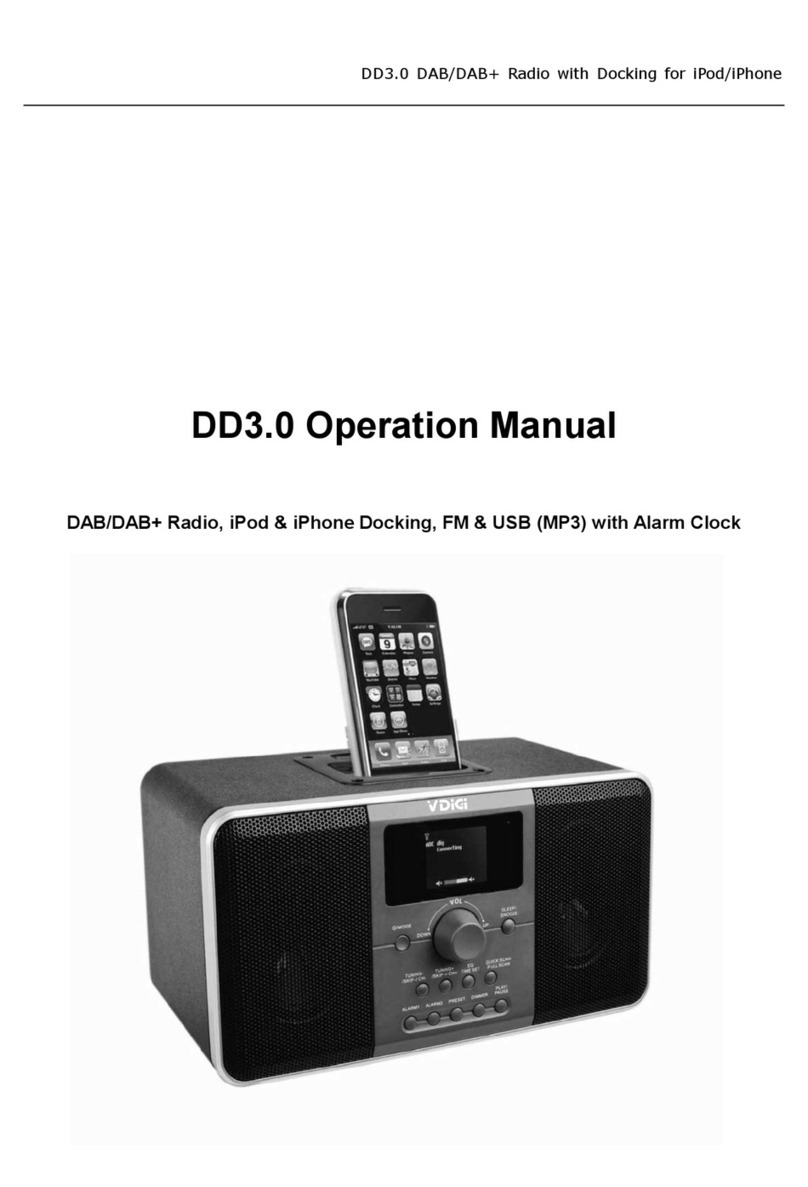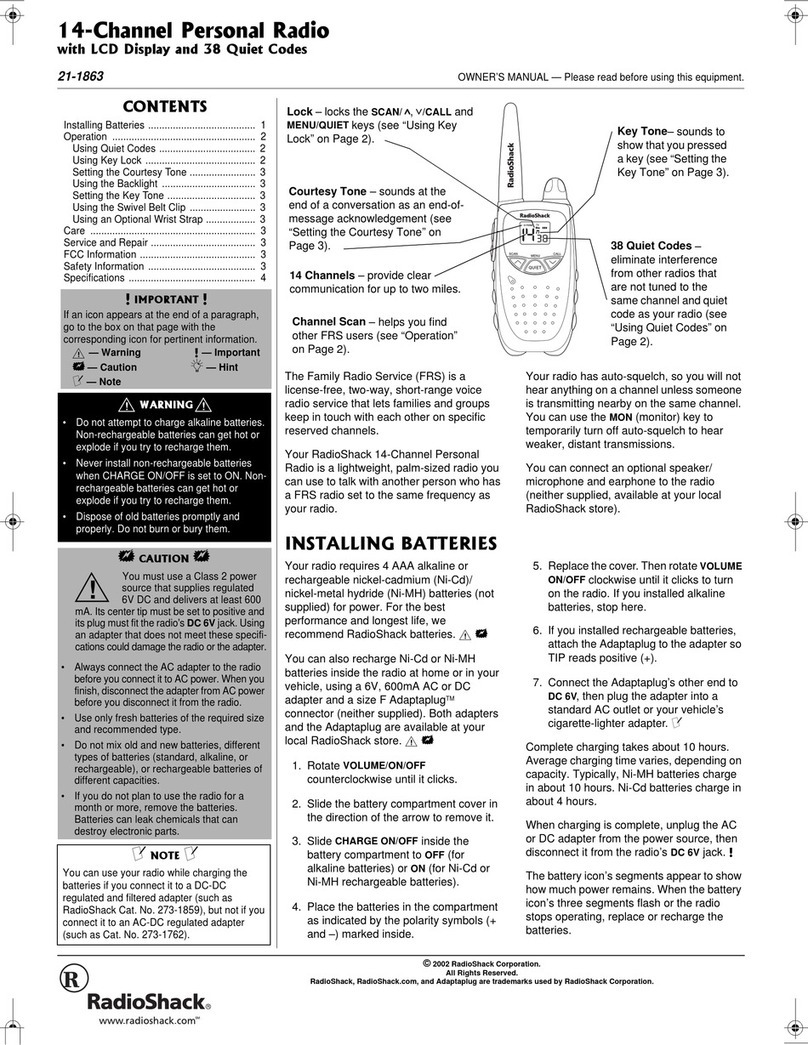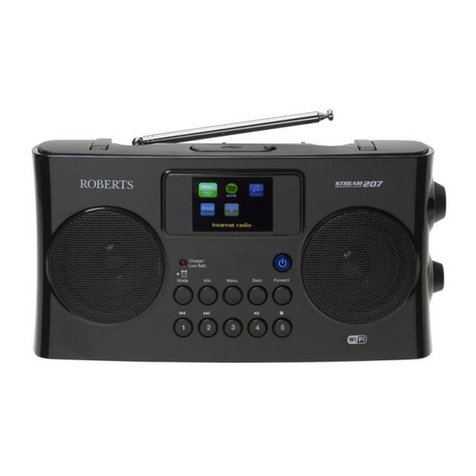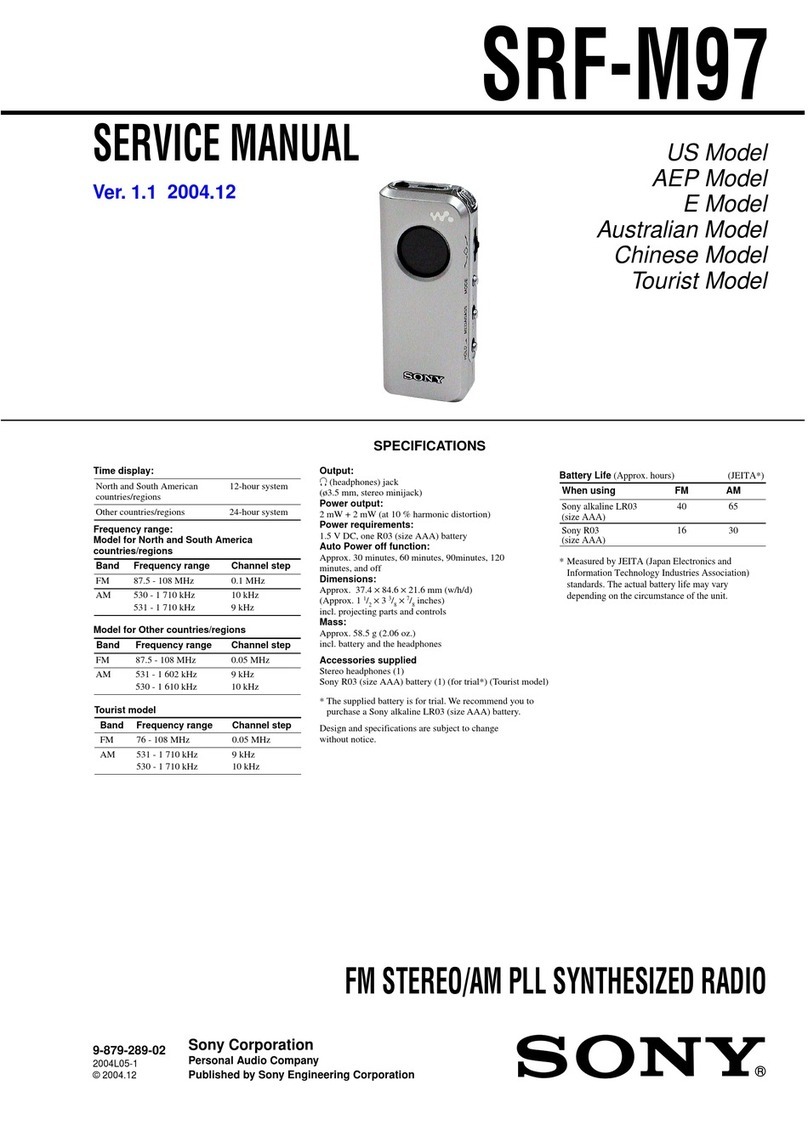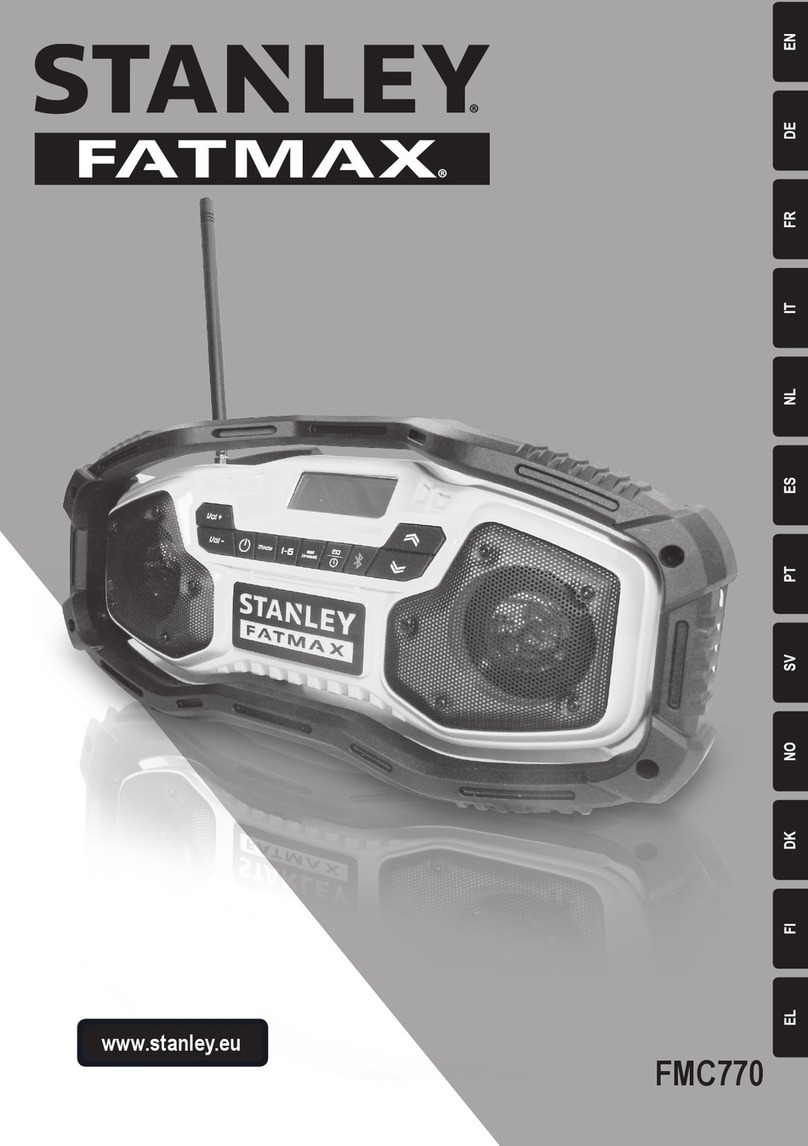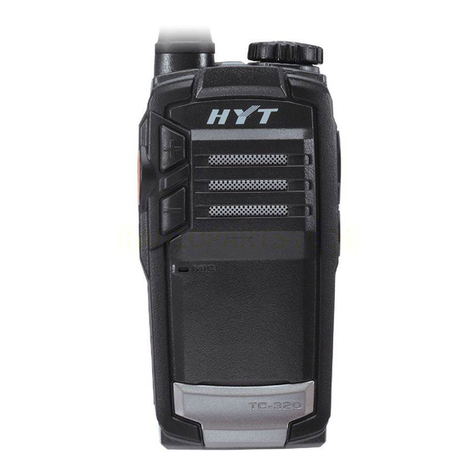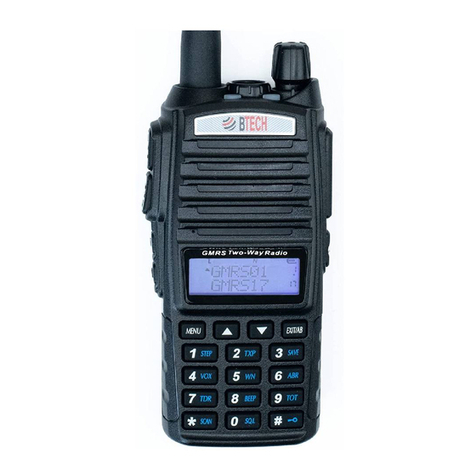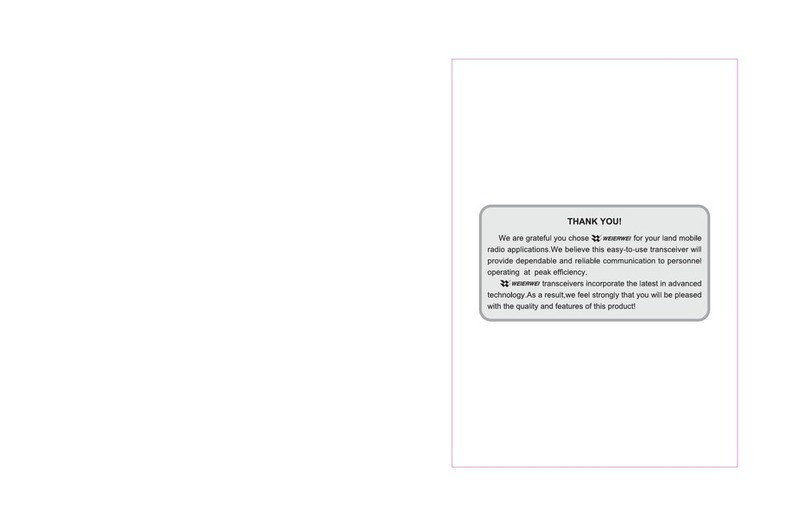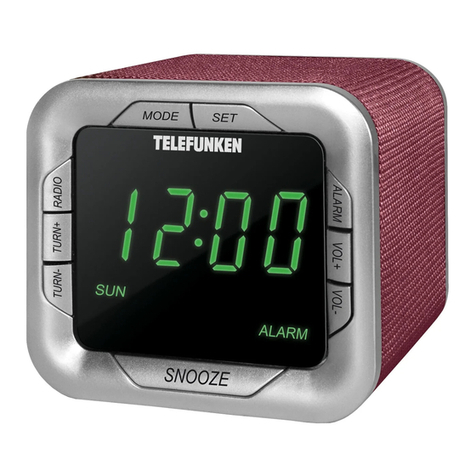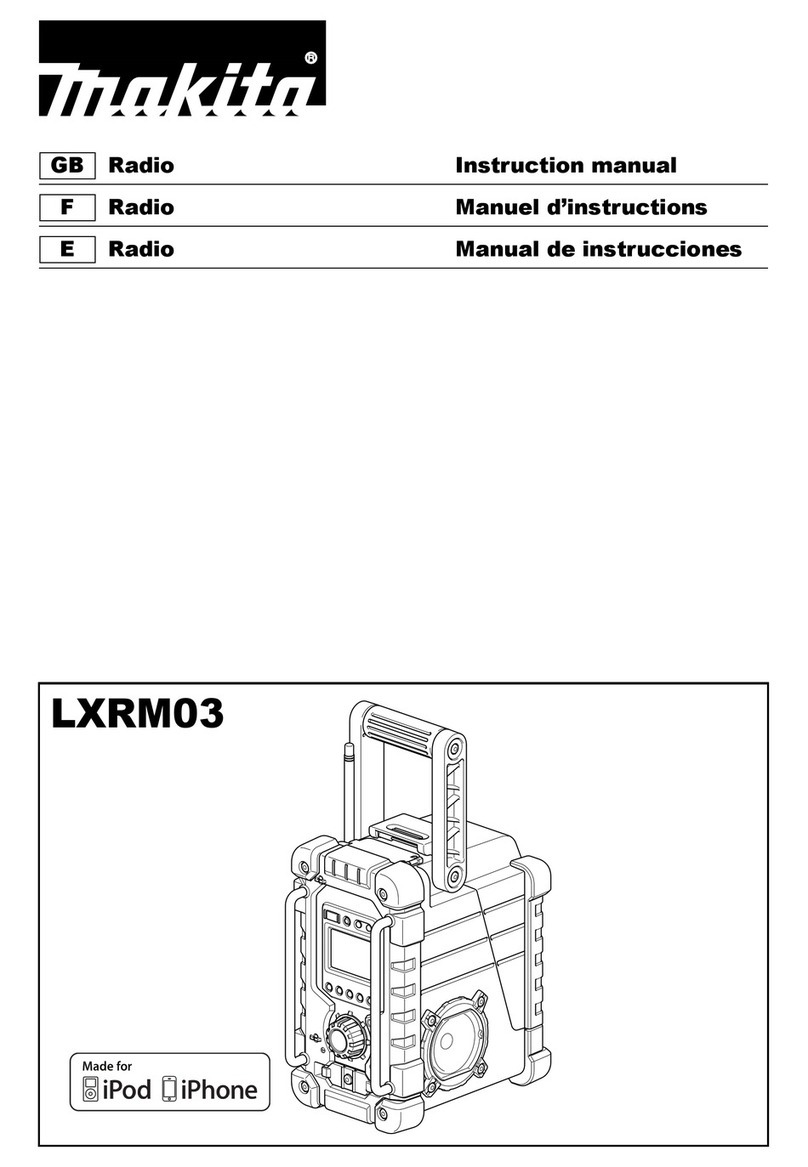4
CONTROLS AND FUNCTIONS
CONTROLES Y FUNCIONES
A. Push-To-Talk Button -Permits radio transmissions • Botón
"Presione Para Hablar" (P-T-T) - Permite la transmisión por
radio
B. Channel Up/Down Buttons -Selects any one of 40 channels
available • Botones de Subida y Bajada de Canales -
Selecciona cualquiera de los 40 canales disponibles
C. Antenna Jack - Connects the unit's "Rubber Duck" antenna,
an optional telescopic antenna, or any Citizen's Band/50
ohm mobile or base antenna • Jack de Antena - Conecta
la antena de hule "Rubber Duck" de la unidad, a una antena
telescópica opcional, o a cualquier antena móvil o de
base de banda ciudadana/50 ohmios
D. "Rubber Duck" Antenna with BNC Connector • Antena
de hule "Rubber Duck" con conector BNC
E. Squelch Control -Allows background noise to be eliminated
when no signal is present • Control de Silenciador - Permite
la eliminación de ruidos de fondo cuando no hay señal
F. Off/On-Volume Control -Used to turn the radio on or off
and to adjust the listening volume • Control de Volumen -
Se usa para encender o apagar el radio y para ajustar el
volumen
G. Carrying Strap • Asa de Transporte
H. Transmit (TX) LED Indicator - Identifies active transmissions
• Indicador LED de Transmisión (TX) - Identifica las
transmisiones activas
I. Battery Low LED - Alerts user to low battery condition
• LED Batería Baja - Alerta al usuario cuando la batería
tiene carga baja
J. LED Display -Identifies channel number selection
• Pantalla LED - Identifica la selección del número del canal
K. Weather (WX) LED Indicator: Identifies active weather
transmissions • Indicador LED Meteorológico (WX) -
Identifica las transmisiones meteorológicas activas
